|
Books Should Be Free Loyal Books Free Public Domain Audiobooks & eBook Downloads |
|
|
Books Should Be Free Loyal Books Free Public Domain Audiobooks & eBook Downloads |
|
History Books |
|---|
|
Book type:
Sort by:
View by:
|
By: Eva March Tappan (1854-1930) | |
|---|---|
 World’s Story Volume VI: Russia, Austria-Hungary, the Balkan States and Turkey
World’s Story Volume VI: Russia, Austria-Hungary, the Balkan States and Turkey
This is the sixth volume of the 15-volume series of The World’s Story: a history of the World in story, song and art, edited by Eva March Tappan. Each book is a compilation of selections from prose literature, poetry and pictures and offers a comprehensive presentation of the world's history, art and culture, from the early times till the beginning of the 20th century. Topics in Part VI include the Russian Empire, the fights for independence in Hungary and the Balkan states and the politics of early Turkey... | |
 World’s Story Volume VIII: Norway, Sweden, Denmark, Iceland, Greenland and the Search for the Poles
World’s Story Volume VIII: Norway, Sweden, Denmark, Iceland, Greenland and the Search for the Poles
This is the eighth volume of the 15-volume series of The World’s Story: a history of the World in story, song and art, edited by Eva March Tappan. Each book is a compilation of selections from prose literature, poetry and pictures and offers a comprehensive presentation of the world's history, art and culture, from the early times till the beginning of the 20th century. Topics in Part VIII include excerpts from the Eddas, the life of the Vikings, the Scandinavian kings' fight for supremacy and the race towards the North and South Pole... | |
 World’s Story Volume IX: England
World’s Story Volume IX: England
This is the ninth volume of the 15-volume series of The World’s Story: a history of the World in story, song and art, edited by Eva March Tappan. Each book is a compilation of selections from prose literature, poetry and pictures and offers a comprehensive presentation of the world's history, art and culture, from the early times till the beginning of the 20th century. Part IX deals with the first part of the history of England, from the early times till the reign of the Tudor kings and queens... | |
 World’s Story Volume X: England, Scotland, Ireland and Wales
World’s Story Volume X: England, Scotland, Ireland and Wales
This is the tenth volume of the 15-volume series of The World’s Story: a history of the World in story, song and art, edited by Eva March Tappan. Each book is a compilation of selections from prose literature, poetry and pictures and offers a comprehensive presentation of the world's history, art and culture, from the early times till the beginning of the 20th century. Part X covers the second part of the history of England, from the Stuart Kings till the early 1900s. Also included are excerpts from the history of Ireland, Scotland and Wales, as well as Irish and Welsh legends and Scottish ballads... | |
 World’s Story Volume XI: Canada, South America, Central America, Mexico and the West Indies
World’s Story Volume XI: Canada, South America, Central America, Mexico and the West Indies
This is the eleventh volume of the 15-volume series of The World’s Story: a history of the World in story, song and art, edited by Eva March Tappan. Each book is a compilation of selections from prose literature, poetry and pictures and offers a comprehensive presentation of the world's history, art and culture, from the early times till the beginning of the 20th century. Part XI contains stories about Canadian history and about the discovery of Central and South America, from the early Inca and Aztec civilizations to the 20th century revolutions and upheavals. - Summary by Sonia Cast list for The Court of Justice of General Gomez: Major: Jim Locke / Gomez: Monika M.C. / Narrator: Sonia | |
 World’s Story Volume XII: The United States
World’s Story Volume XII: The United States
This is the twelfth volume of the 15-volume series of The World’s Story: a history of the World in story, song and art, edited by Eva March Tappan. Each book is a compilation of selections from prose literature, poetry and pictures and offers a comprehensive presentation of the world's history, art and culture, from the early times till the beginning of the 20th century. Part XII compiles stories about the early history of the United States, starting with the first explorators, the fights with the native Americans, the early settlers and culminating with the struggle for independence from the European leaders. - Summary by Sonia | |
 World’s Story Volume XIII: The United States
World’s Story Volume XIII: The United States
This is the thirteenth volume of the 15-volume series of The World’s Story: a history of the World in story, song and art, edited by Eva March Tappan. Each book is a compilation of selections from prose literature, poetry and pictures and offers a comprehensive presentation of the world's history, art and culture, from the early times till the beginning of the 20th century. Part XIII is the second volume of the history of the United States, exploring topics from the Civil War, the settlement on the West Coast, and new scientific discoveries from the 19th and early 20th centuries. - Summary by Sonia | |
By: Evans, A. J. (1889-1960) | |
|---|---|
 The Escaping Club
The Escaping Club
Described by some as one of the greatest escape books published. The Escaping Club recounts Evans' escape to Switzerland from a supposedly "escape-proof" German prison camp during World War I. After repatriation and rejoining the war, Evans again finds himself captured, this time first by Arabs and then by Turks. He again manages to escape. A detailed look at the trials faced by Allied POWs during World War I. | |
By: Ezra Meeker (1830-1928) | |
|---|---|
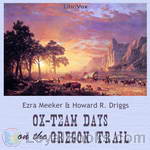 Ox-Team Days on the Oregon Trail
Ox-Team Days on the Oregon Trail
Ezra Meeker…was an early pioneer who traveled the Oregon Trail by ox cart as a young man. Beginning in his 70s, he worked tirelessly to memorialize the trail, repeatedly retracing the trip of his youth. This book is a memoir of those days. | |
By: F. J. Foakes-Jackson (1855-1941) | |
|---|---|
 Social Life in England 1750-1850
Social Life in England 1750-1850
In 1916, the Cambridge historian, F.J. Foakes-Jackson braved the wartime Atlantic to deliver the Lowell Lectures in Boston. In these wide-ranging and engaging talks, the author describes British life between 1750-1850. There are John Wesley's horseback peregrinations over thousands of miles of English countryside. Next, Foakes-Jackson introduces the mordant rural poet, George Crabbe, who began life as a surgeon apothecary and ended up as a parish rector who made house calls. He gives us a female convict, assorted Cambridge University dons, Regency fops and rakes, and Victorian slices of life from Dickens and Thackeray... | |
By: Fa'iz El-Ghusein (1883-1968) | |
|---|---|
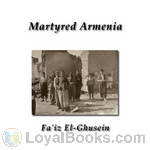 Martyred Armenia
Martyred Armenia
This is a first hand account of the Armenian Genocide written by a Syrian who had been a Turkish official for three and a half years. His accounts tell of the worst of humanity, and also of the noblest. The noble include families who courageously support each other in the face of death, and Turks who refuse to follow orders to kill, knowing that they shall be executed themselves for their defiance. | |
By: Fabian Franklin | |
|---|---|
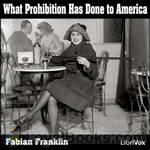 What Prohibition Has Done to America
What Prohibition Has Done to America
In What Prohibition Has Done to America, Fabian Franklin presents a concise but forceful argument against the Eighteenth Amendment of the U.S. Constitution. Beginning in 1920, this Amendment prohibited the sale and manufacture of alcoholic beverages in the United States, until it was repealed in 1933. Franklin contends that the Amendment “is not only a crime against the Constitution of the United States, and not only a crime against the whole spirit of our Federal system, but a crime against the first principles of rational government... | |
By: Fanny Stenhouse (1829-1904) | |
|---|---|
 ''Tell It All'': The Story of a Life's Experience in Mormonism
''Tell It All'': The Story of a Life's Experience in Mormonism
Fanny relates the experiences of a 19th century missionary as she and her young husband proselytize throughout Europe in search of converts to the new Mormon faith. Her religious zeal is sorely tested upon receipt of news from America revealing that their religion has adopted the practice of polygamy as the means to exaltation. The couple is summoned to Utah only to find themselves firmly ensconced in Brigham Young's inner circle and called upon to practice plural marriage or risk a fall from family, friends, and faith. - Summary by Spiffycat | |
By: Fay-Cooper Cole | |
|---|---|
 The Tinguian
The Tinguian
The Tinguian. Social, Religious, and Economic Life of a Philippine TribeBy Fay-Cooper Cole INTRODUCTION It seems desirable, at the outset, to set forth certain general conclusions regarding the Tinguian and their neighbors. Probably no pagan tribe of the Philippines has received more frequent notice in literature, or has been the subject of more theories regarding its origin, despite the fact that information concerning it has been exceedingly scanty, and careful observations on the language and physical types have been totally lacking... | |
By: Ferdinand de Lesseps (1805-1894) | |
|---|---|
 History of the Suez Canal
History of the Suez Canal
A lively picture of the origin and completion of the Suez Canal and his architect, Vicomte de Lesseps. This is the translation of a lecture given before the Societe de Gens Lettres in Paris, in April 1870 by de Lesseps himself. | |
By: Ferdinand Ossendowski (1876-1945) | |
|---|---|
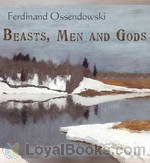 Beasts, Men and Gods
Beasts, Men and Gods
“Beasts, Men and Gods” is an account of an epic journey, filled with perils and narrow escapes, in the mold of “The Lord of the Rings.”The difference is: it’s all true.Ferdinand Ossendowski was a Pole who found himself in Siberia and on the losing side during the Bolshevik Revolution. To escape being rounded up and shot, he set out with a friend to reach the Pacific, there to take ship back to Europe. During his journey he fell in with dozens of other military men who shared the same objective… but nearly every one of them perished on the way... | |
By: Ferdinand Schmidt (1816-1890) | |
|---|---|
 Gudrun
Gudrun
The charming story of “Gudrun” is a romance of the old heroic period, written by some unknown poet of Austria or Bavaria in the thirteenth century. Next to the "Nibelungen Lied," it is the most important of the German epic poems...The same elemental passions are depicted. The men are brave, vigorous heroes, rejoicing in battle and feats of prowess; the women are beautiful, constant, and courageous. There are many fine delineations of character in the original, as well as vigorous sketches of northern scenery... | |
By: Flavius Josephus (37 - c.100) | |
|---|---|
 The Antiquities of the Jews
The Antiquities of the Jews
Antiquities of the Jews was a work published by the important Jewish historian Flavius Josephus about the year 93 or 94. It is a history of the Jewish people, written in Greek for Josephus' gentile patrons. Beginning with the creation of Adam and Eve, it follows the events of the historical books of the Hebrew Bible, but sometimes omits or adds information.Volume 1 contains Books 1-5 and ends with the dedication of Samuel and death of Eli the priest. | |
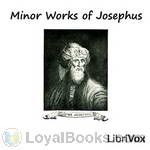 Minor Works of Josephus
Minor Works of Josephus
There are 3 parts to this collection.(1) Against Apion is a two-volume defense of Judaism as classical religion and philosophy, stressing its antiquity, as opposed to what Josephus claimed was the relatively more recent tradition of the Greeks. Some anti-Judean allegations ascribed by Josephus to the Greek writer Apion, and myths accredited to Manetho are also addressed.(2) Discourse To The Greeks Concerning Hades describes the author's views on the afterlife against the prevailing view of the "Greeks" (i... | |
By: Fleming Mant Sandwith (1853-1918) | |
|---|---|
 Sleeping Sickness
Sleeping Sickness
In the twenty-first century sleeping sickness is still a life-threatening disease of adults and children and a hazard to tourists in East African game parks.The protozoan parasite is transmitted by the tsetse fly, a buzzing insect with reddish eyes and a large biting proboscis. In 1912, when this short monograph was written, physicians of the British Empire understood that trans-continental expeditions manned by infected African porters, had set off an epidemic of sleeping sickness that had claimed half a million lives... | |
By: Florence Morse Kingsley (1859-1937) | |
|---|---|
 Tor, A Street Boy of Jerusalem
Tor, A Street Boy of Jerusalem
Tor is a young beggar living in the city of Jerusalem during the tumultuous time of the Roman occupation. Shouts of hope are the last thing this street boy expects when he witnesses Jesus riding into Jerusalem on a donkey. Tor comes face to face with the man Jesus and from that moment his life is forever changed. With thievery, injustice, and brutality as the backdrop of this novel, Tor learns to trade his hatred for love, and what it means to be a follower of Christ. This novel is for ages eight and up. | |
By: Forrest Crissey (1864-1943) | |
|---|---|
 Tattlings of a Retired Politician
Tattlings of a Retired Politician
"The letters of Hon. William Bradley, Ex-Governor and former veteran of practical politics, written to his friend and protege Ned who is still busy 'carving a career back in the old state.'" This is a novel filled with humorous political anecdotes by the main character, the Honorable William Bradley, told for the benefit of his protege, Ned. It conveys a sense of the ironic and humorous side of politics in Washington and back in their home state. | |
By: Founding Fathers of the United States | |
|---|---|
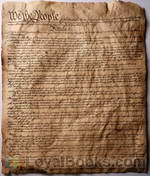 The Constitution of the United States of America, 1787
The Constitution of the United States of America, 1787
The Declaration of Independence was signed on July 4, 1776. It announced that the thirteen American colonies, who were at war with Great Britain in the American Revolutionary War, no longer considered themselves part of the British Empire. They now called themselves a new nation, The United States of America. This famous document went on to become a well-known keystone of the human rights movement. However, the newly formed state had no real identity or philosophy and were merely a loose collection of states that had freed themselves from colonial rule... | |
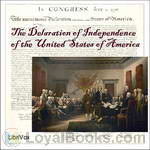 The Declaration of Independence of the United States of America
The Declaration of Independence of the United States of America
Declaration of Independence is the document in which the Thirteen Colonies declared themselves independent of the Kingdom of Great Britain and explained their justifications for doing so. It was ratified by the Continental Congress on July 4, 1776. | |
 Bill of Rights & Amendments to the US Constitution
Bill of Rights & Amendments to the US Constitution
The Constitution has a total of 27 amendments. The first ten, collectively known as the Bill of Rights, were ratified simultaneously. The following seventeen were ratified separately. | |
By: Frances Calderón de la Barca (1804-1882) | |
|---|---|
 Life in Mexico
Life in Mexico
FRANCES CALDERON DE LA BARCA, born in Edinburgh, 1804, the daughter of William Inglis. After her father’s death she settled in America, where she married the Spanish diplomat, Don Angel Calderon de la Barca. She accompanied him on his various appointments to Mexico, Washington, and finally to Madrid, where she was created Marquesa de Calderon de la Barca by Alfonso XII and died in 1882. The present work is the result of observations made during a two years’ residence in Mexico, by a lady, whose position there made her intimately acquainted with its society, and opened to her the best sources of information in regard to whatever could interest an enlightened foreigner... | |
By: Frances Little (1863-1941) | |
|---|---|
 Little Sister Snow (version 2)
Little Sister Snow (version 2)
American author Fannie Caldwell, under pen name of Frances Little, tells the story of young Yuki San growing up in Japan circa early 1900s, and of her dreams of an American. (Introduction by Cheri Gardner) | |
By: Frances M. A. Roe | |
|---|---|
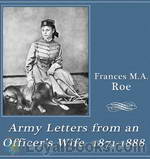 Army Letters from an Officer's Wife, 1871-1888
Army Letters from an Officer's Wife, 1871-1888
"There appeared from the bushes in front of me, and right in the path, two immense gray wolves . . . Rollo saw them and stopped instantly, giving deep sighs, preparing to snort, I knew . . . To give myself courage, I talked to the horse, slowly turning him around . . . when out of the bushes in front of us, there came a third wolf! The situation was not pleasant and without stopping to think, I said ‘Rollo, we must run him down - now do your best’ and taking a firm hold of the bridle, and bracing myself in the saddle, I struck the horse with my whip and gave an awful scream... | |
By: Frances Trollope (1779-1863) | |
|---|---|
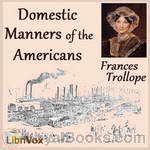 Domestic Manners of the Americans
Domestic Manners of the Americans
Next to de Alexis de Tocquville's almost contemporary Democracy in America, Frances Trollope's work may be the most famous (or at least notorious) dissection of manners and morals of the United States. The work was a sensation on both sides of the Atlantic, and particularly in America, where Trollope was reviled as representing the worst of old world prejudices the new republic (though the criticism did nothing to hurt sales).Accompanied by a son and two daughters, Trollope lived in the United States... | |
By: Francis Andrew March (1863-1926) | |
|---|---|
 History of the World War
History of the World War
This is a popular narrative history of the world's greatest war. Written frankly from the viewpoint of the United States and the Allies, it visualizes the bloodiest and most destructive conflict of all the ages from its remote causes to its glorious conclusion and beneficent results.Two ideals have been before us in the preparation of this necessary work. These are simplicity and thoroughness. It is of no avail to describe the greatest of human events if the description is so confused that the reader loses interest... | |
By: Francis Archibald Bruton | |
|---|---|
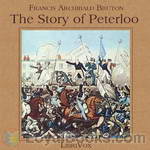 The Story of Peterloo
The Story of Peterloo
On 16th August 1819 around 60,000 people gathered at St. Peter’s Fields, Manchester, to rally for parliamentary reform. Shortly after the meeting began, a troop of Hussars and local yeomanry rode into the crowd, wielding clubs, swords and sabres, leaving 18 dead and more than 700 severely injured. In the following years, the Peterloo Massacre was the subject of several trials and inquiries. It now counts as one of the most significant events in the history of the British labour movement. Francis Archibald Bruton’s account of the day’s events, published for its centenary and based on a detailed examination of contemporary accounts, is both dispassionate and moving... | |
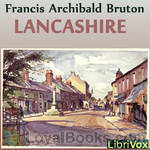 Lancashire
Lancashire
The county of Lancashire in the north-west of England is best known as the engine room of the nineteenth-century Industrial Revolution. Steering clear of the industrial districts, F. A. Bruton takes the reader on an engaging tour of the county's beauty spots and lesser known landscapes. Taking the view that the charm of a district is nothing without its historical associations, Bruton packs his account with historical detail and literary references to, among others, Leland, Wordsworth, Ruskin, Arnold, and Mrs. Carlyle. (Introduction by Phil Benson) | |
 Three Accounts of Peterloo
Three Accounts of Peterloo
A companion volume to F.A. Bruton's 'The Story of Peterloo', the full title of this short collection is 'Three Accounts of Peterloo by Eyewitnesses, Bishop Stanley, Lord Hylton, John Benjamin Smith with Bishop Stanley's Evidence at the Trial'. The three contemporary accounts, each with a short introduction by the editor, give different perspectives on the events of 16 August 1819, when a troop of Hussars accompanied by the local Yeomanry rode into a peaceful reform rally at St. Peter's Fields, Manchester, leaving 18 dead and more than 700 injured. | |
By: Francis Edward Tourscher (1870-1939) | |
|---|---|
 Work Of The Sisters During The Epidemic Of Influenza October, 1918
Work Of The Sisters During The Epidemic Of Influenza October, 1918
In 1918 over 2,000 Roman Catholic nuns left their convents in the Philadelphia area to nurse the sick and dying of the influenza epidemic. Twenty-three of the sisters died because of their ministrations. This is an account of their heroic work published in the American Catholic Historical Society Of Philadelphia, 1919. “Gathered and arranged from reports of personal experiences of the sisters and contributed by request of the compiler.” The compiler/author was an academic/priest at Villanova University in Pennsylvania. Since there are no chapter headings, this recording uses the section headings of the book. - Summary by David Wales and book's subtitle | |
By: Francis Key Howard (1826-1872) | |
|---|---|
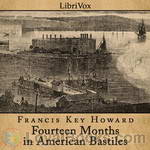 Fourteen Months in American Bastiles
Fourteen Months in American Bastiles
Francis Key Howard recounts in this book his life as a political prisoner of the United States. He points out that he was held captive at the same location where his grandfather was inspired to write the national anthem about the "land of the free," which makes a very stunning contrast. The sufferings that were imposed on him by the Union forces had the effect of solidifying his determination to resist unjust governmental dictates. (Introduction by Katie Riley) | |
By: Francis M. Walters | |
|---|---|
 Physiology and Hygiene
Physiology and Hygiene
Physiology and Hygiene for Secondary Schoolsby Francis M. Walters, A.M.PREFACE The aim in the preparation of this treatise on the human body has been, first, to set forth in a teachable manner the actual science of physiology; and second, to present the facts of hygiene largely as applied physiology. The view is held that right living consists in the harmonious adjustment of one's habits to the nature and plan of the body, and that the best preparation for such living is a correct understanding of the physical self... | |
By: Francis Parkman | |
|---|---|
 Pioneers of France in the New World
Pioneers of France in the New World
Francis Parkman (1823-1893) has been hailed as one of America’s first great historians and as a master of narrative history. Numerous translations have spread the books around the world. The American writer and literary critic Edmund Wilson (1895-1972) in his book O Canada (1965), described Parkman’s France and England in North America in these terms: The clarity, the momentum and the color of the first volumes of Parkman’s narrative are among the most brilliant achievements of the writing of history as an art... | |
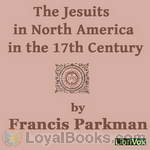 The Jesuits in North America in the 17th Century
The Jesuits in North America in the 17th Century
Parkman has been hailed as one of America's first great historians and as a master of narrative history. Numerous translations have spread the books around the world. The American writer and literary critic Edmund Wilson (1895-1972) in his book "O Canada" (1965), described Parkman’s France and England in North America in these terms: "The clarity, the momentum and the color of the first volumes of Parkman’s narrative are among the most brilliant achievements of the writing of history as an art... | |
By: Francis Parkman, Jr. | |
|---|---|
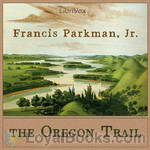 The Oregon Trail
The Oregon Trail
The book is a breezy, first-person account of a 2 month summer tour of the U.S. states of Nebraska, Wyoming, Colorado, and Kansas when Parkman was 23. Proofed and produced by Karen Merline. | |
 Montcalm and Wolfe
Montcalm and Wolfe
Francis Parkman (1823-1893) has been hailed as one of America's great nineteenth century historians, along with William Prescott, John Lothrop Motley, George Bancroft, and Henry Adams. He is a master of narrative history and is most known for his "The Oregon Trail" and his seven volume work on the history of the French and English in North America. "Montcalm and Wolfe", the seventh and last volume of the series, covers the conflict between England and France for supremacy in the New World from 1745 to 1884... | |
 Conspiracy of Pontiac and the Indian War after the Conquest of Canada
Conspiracy of Pontiac and the Indian War after the Conquest of Canada
"The Conspiracy of Pontiac" was Parkman's first history book and first published in 1851. It covers the Indian wars of 1763 to 1769. Pontiac, an Ottawa chief, put together a coalition of Indian tribes from around the Great Lakes region and the Illinois and Ohio Countries to attack the British under General Jeffrey Amherst. - Summary by Richard Carpenter | |
 La Salle, Discovery of The Great West
La Salle, Discovery of The Great West
Parkman has been hailed as one of America's first great historians and as a master of narrative history. Numerous translations have spread the books around the world. The American writer and literary critic Edmund Wilson in his book O Canada , described Parkman’s France and England in North America in these terms: The clarity, the momentum and the color of the first volumes of Parkman’s narrative are among the most brilliant achievements of the writing of history as an art. Parkman's biases, particularly his attitudes about nationality, race, and especially Native Americans, has generated criticism... | |
By: Francis Rolt-Wheeler | |
|---|---|
 The Boy With the U.S. Census
The Boy With the U.S. Census
THE BOY WITH THE U.S. CENSUSBY FRANCIS ROLT-WHEELERPREFACELife in America to-day is adventurous and thrilling to the core. Border warfare of the most primitive type still is waged in mountain fastnesses, the darkest pages in the annals of crime now are being written, piracy has but changed its scene of operations from the sea to the land, smugglers ply a busy trade, and from their factory prisons a hundred thousand children cry aloud for rescue. The flame of Crusade sweeps over the land and the call for volunteers is abroad... | |
By: Francis Tiffany (1827-1908) | |
|---|---|
 Life of Dorothea Lynde Dix
Life of Dorothea Lynde Dix
A biography of a woman who advocated for the humane treatment of people with mental illness. As a young woman travelling overseas, Dorothea Dix met with people who were interested in reforming how the mentally ill were treated. Returning to America, she pushed for changes and proper care for these individuals, meeting with strong resistance. Her work ultimately resulted in social reform and the creation of asylums. Dorothea Dix was a tireless crusader and instrumental in important social reforms in the United States and the world. - Summary by Phyllis Vincelli | |
By: Francis Whiting Halsey (1851-1919) | |
|---|---|
 Great Epochs in American History, Volume III
Great Epochs in American History, Volume III
This is the third volume in ten volume series of great epochs in the history of the United States, from the landing of Columbus to the building of the Panama Canal. In large part, events composing each epoch are described by men who participated in them, or were personal eye-witnesses of them. Volume III describes the French war and the Revolution and covers time period from 1745 to 1782. - Summary by Kikisaulite | |
By: François Norbert Blanchet (1795-1883) | |
|---|---|
 Historical Sketches of the Catholic Church in Oregon, During the Past Forty Years
Historical Sketches of the Catholic Church in Oregon, During the Past Forty Years
This book is a first-hand account of the experiences of Fr. Norbert Blanchet and his fellow missionaries to Oregon in the 1830’s and 1840’s. The original duo, Fr. Blanchet and Fr. Demers, had incredible adventures traveling across Canada by canoe, horseback, and river raft to arrive at the Hudson’s Bay Company Fort at Vancouver, Washington. From there, they energetically and joyfully established churches in the Willamette valley, along the Columbia River, and into present day Washington state and British Columbia... | |
By: François Pierre Guillaume Guizot (1787-1874) | |
|---|---|
 Popular History of England, From the Earliest Times to the Reign of Queen Victoria, Vol 1
Popular History of England, From the Earliest Times to the Reign of Queen Victoria, Vol 1
This is volume one in this series of books and deals with history from Caractacus and his Wife before Claudius to the death of Wat Tyler. This follows the history of that time. Volumes two and three will be done once this one is complete. | |
By: Frank Berkeley Smith (1869-1931) | |
|---|---|
 Real Latin Quarter
Real Latin Quarter
"Cocher, drive to the rue Falguière"--this in my best restaurant French. The man with the varnished hat shrugged his shoulders, and raised his eyebrows in doubt. He evidently had never heard of the rue Falguière. "Yes, rue Falguière, the old rue des Fourneaux," I continued. Cabby's face broke out into a smile. "Ah, oui, oui, le Quartier Latin." And it was at the end of this crooked street, through a lane that led into a half court flanked by a row of studio buildings, and up one pair of dingy waxed steps, that I found a door bearing the name of the author of the following pages--his visiting card impaled on a tack... | |
By: Frank Henderson | |
|---|---|
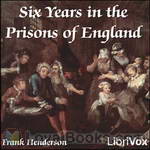 Six Years in the Prisons of England
Six Years in the Prisons of England
A Merchant talks about daily life inside prisons of England, describes routines and how prisoners are treated. He notes stories of how fellow prisoners came to be in prison, and his ideas about the penal system, its downfalls and ways to improve it. The reader can see similarities to the problems we still have in regarding "criminals" today. (Introduction by Elaine Webb) | |
By: Frank Lewis Dyer and Thomas Commerford Martin | |
|---|---|
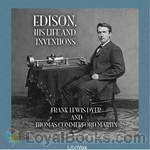 Edison, His Life and Inventions
Edison, His Life and Inventions
One of the most prolific and multi-talented geniuses the world has ever seen, Thomas Alva Edison's life is indeed an inspiration for each new generation. Today we live in a world that would not have been possible if not for several of his important inventions – the electric light bulb, the motion picture camera, electric power distribution, the phonograph, and a host of other things that we take for granted today. In fact, he still holds the world record for the maximum number of patents, numbering 1093 in all! Edison – His Life and Inventions by Frank Lewis Dyer and Thomas Commerford Martin, published in 1910 was in fact a biography commissioned by Edison himself... | |
By: Frank Mundell (1870-1932) | |
|---|---|
 Stories of the Lifeboat
Stories of the Lifeboat
There's fury in the tempest, And there's madness in the waves; The lightning snake coils round the foam, The headlong thunder raves; Yet a boat is on the waters, Filled with Britain's daring sons, Who pull like lions out to sea, And count the minute guns. Rescue attempts to save the lives of stranded and imperilled sailors and seafarers have undoubtedly been occurring ever since the very first time that man sailed on a floating object away from the safety of the shore and out onto the wild and unpredictable seas of the world... | |
 Stories of the Royal Humane Society
Stories of the Royal Humane Society
Established in 1774, the ‘Society for the Recovery of Persons Apparently Drowned’ published information on how to save people from drowning, promoted the concept of using methods of artificial resuscitation to attempt to revive victims who had appeared to have lost their life through drowning and rewarded those people who had saved a life. Under the royal patronage of King George the Third, the Society changed its name in 1787 to ‘The Royal Humane Society’ and this organisation still exists... | |
 Stories of North Pole Adventure
Stories of North Pole Adventure
This volume does not pretend to be a history of Artic exploration. My aim has been to narrate some of the most thrilling incidents of Polar adventure in such a manner that the reader may feel something of the fascination which induces explorers, in spite of reverses and disasters, to attempt again and again to penetrate the vast region of snow and silence and solitude around the North Pole. Great care has been taken to ensure accuracy; and, wherever possible, the actual journals of the various expeditions have been consulted, besides a host of minor publications... | |
By: Frank R. Stockton (1834-1902) | |
|---|---|
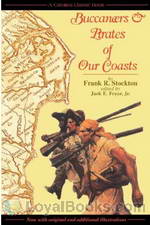 Buccaneers and Pirates of Our Coasts
Buccaneers and Pirates of Our Coasts
Buccaneers and Pirates of our Coasts is a non-fiction, rolicking story of the origins of piracy and of the famous pirates of the coasts of the United States. The stories don’t cast pirates in the glowing light of modern day renditions – in Stockton’s stories, pirates are bad guys! – but the dramatic style makes them good fun to read, anyway! (Summary by Sibella Denton) | |
By: Frank Richard Stockton | |
|---|---|
 Round-about Rambles
Round-about Rambles
ROUND-ABOUT RAMBLES, In Lands of FACT AND FANCYBY FRANK R STOCKTONPREFACECome along, boys and girls! We are off on our rambles. But please do not ask me where we are going. It would delay us very much if I should postpone our start until I had drawn you a map of the route, with all the stopping-places set down. We have far to go, and a great many things to see, and it may be that some of you will be very tired before we get through. If so, I shall be sorry; but it will be a comfort to think that none of us need go any farther than we choose... | |
By: Frank Webb (1828-1894) | |
|---|---|
 Garies and their Friends
Garies and their Friends
The book which now appears before the public may be of interest in relation to a question which the late agitation of the subject of slavery has raised in many thoughtful minds, viz. — Are the race at present held as slaves capable of freedom, self-government, and progress. The author is a coloured young man, born and reared in the city of Philadelphia. This city, standing as it does on the frontier between free and slave territory, has accumulated naturally a large population of the mixed and African race... | |
By: Frederick Adams Woods (1873-1939) | |
|---|---|
 Influence of Monarchs
Influence of Monarchs
Frederick Adams Woods presents compelling evidence to support the great man theory of history and his own category scientific inquiry known as historiometry, or the study of history. In this work, the summarised history of fourteen European nations that have achieved renown at some point in their recorded timeline is compared to the biography of their monarchs and demonstrates the strong link between the intellect and willpower of the supreme leadership and the condition of their country. - Summary by Leon Harvey | |
By: Frederick Davis Greene (1853-1940) | |
|---|---|
 Armenian Crisis in Turkey
Armenian Crisis in Turkey
Frederick Greene shows in this book that the case of the subject races in the Ottoman Empire is desperate, that there is no hope of reform from within, and that relief vimust therefore come through the interference of the powers of Europe. Their action depends largely on the support of the public. “Public opinion,” therefore, “must be brought to bear upon this case,” as Mr. Gladstone said in the House of Commons six years ago. Since then there has been added a new chapter of horrors, and the demand for decisive action in the name of our common humanity has become more urgent... | |
By: Frederick Douglass (1818-1895) | |
|---|---|
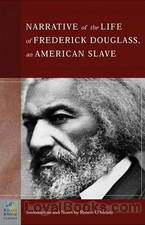 Narrative of the Life of Frederick Douglass
Narrative of the Life of Frederick Douglass
Frederick Douglass was born into slavery on a Maryland plantation. He faced hardship as a child, but later encountered owners who were relatively liberal and allowed him to learn to read, write and be in contact with freed slaves. At the age of 20, he escaped from the plantation and made his way to New York. Though he remained a fugitive, he married and changed his name to avoid being caught. He continued his education and became involved in the Abolitionist Movement. He began touring the country, speaking passionately about the unjust, cruel and inhuman practice of slavery... | |
By: Frederick Herman Tilberg (1895-1979) | |
|---|---|
 Antietam National Battlefield, Maryland
Antietam National Battlefield, Maryland
The American Civil War battle at Antietam, Maryland, on 17 September 1862, has been called the bloodiest day of that conflict. Confederate General Lee’s invasion of the North was repulsed, and when the fighting ended, the course of the Civil War had been greatly altered. This victory by the North moved President Abraham Lincoln to issue The Emancipation Proclamation, freeing all slaves in states then in rebellion against the Union. This 1960 publication is number 31 in the Historical Handbook series put out by the U... | |